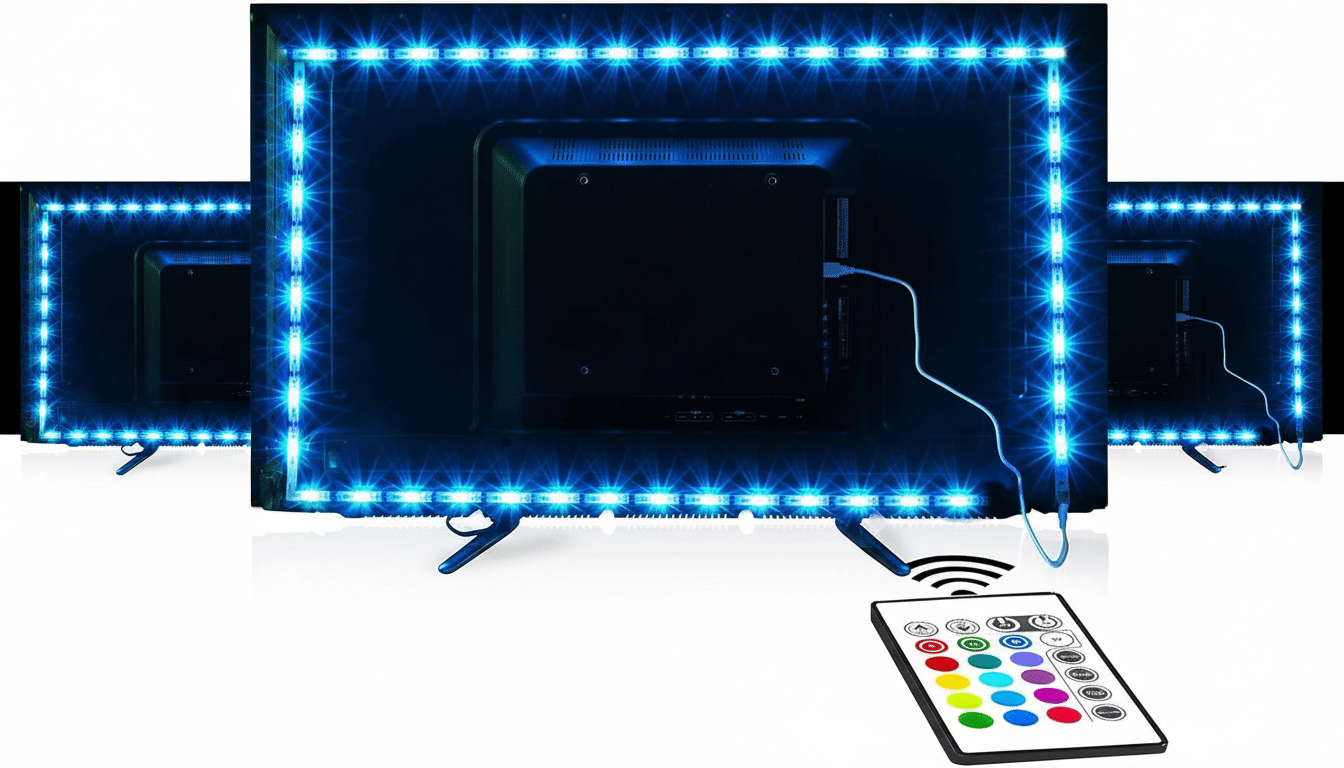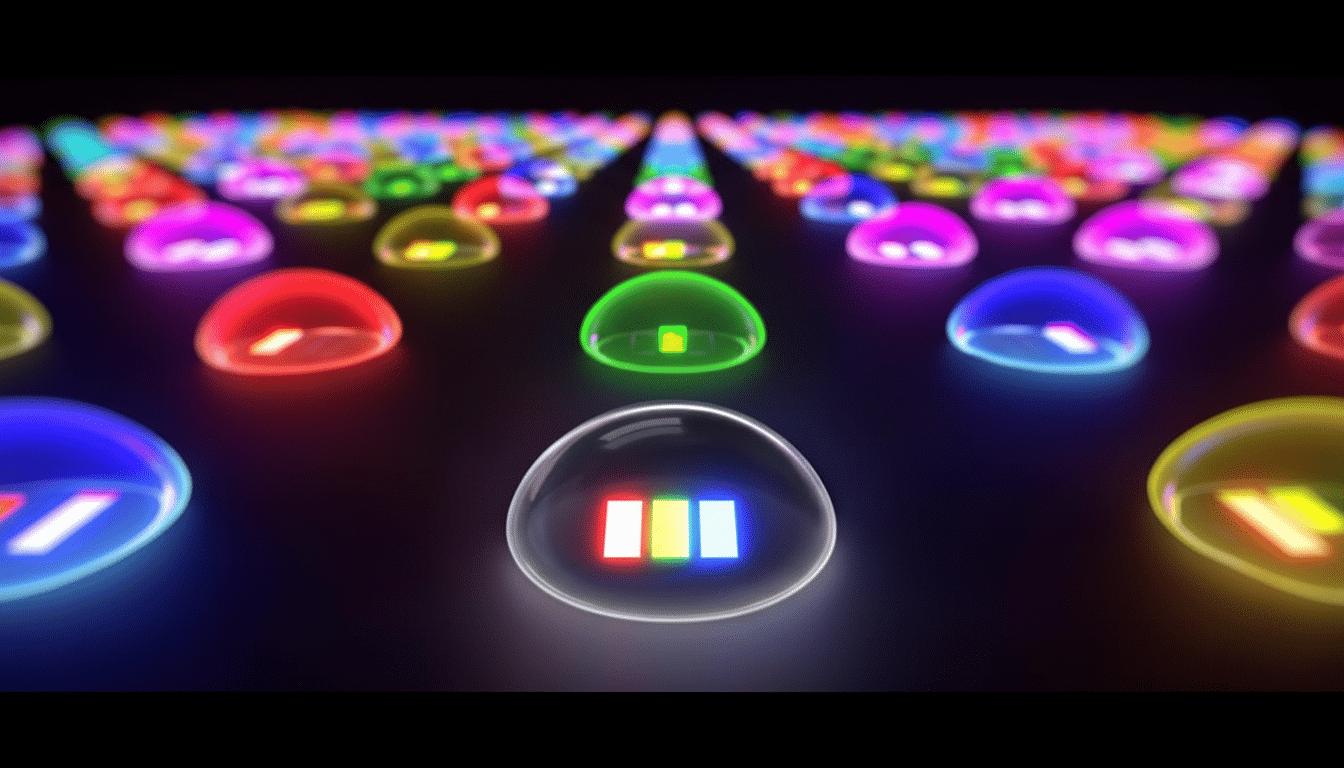TV manufacturers are promoting RGB LED as the next great leap in picture quality, offering more vivid color and brighter displays than today’s best sets. The pitch is simple in theory, gnarled in practice: can tri‑color LED backlighting defend a higher price point against the teeth and claws of Mini LED and OLED?
For all of the acronym overlap, that is not mere marketing brio. RGB LED revolutionizes light transmission and reduces the thickness of the LCD TV by passing light without diffusion through a matrix of tiny, powerful, and very energy‑efficient light‑emitting diodes (LEDs), unlike the white or blue LEDs used in many current LCD TVs. Do it right, and you can dial up color volume, broaden gamut coverage, and drive HDR highlights harder — precisely the properties that make modern movies, sports, and games pop.
- What RGB LED Backlighting Really Changes in LCD TVs
- Real Gains Suggested in Early Demos and Comparisons
- The Price Question and the Confusing Naming Issue
- Will Costs Come Down for RGB LED TVs Over Time?
- How It Stacks Up Against OLED and Mini LED
- Who Should Consider RGB LED TVs Right Now and Why
- The Bottom Line for TV Shoppers Considering RGB LED

What RGB LED Backlighting Really Changes in LCD TVs
Traditional LED‑LCD TVs use white or blue LEDs to light liquid‑crystal layers that filter light and emit color, while other models use phosphors and quantum dots to produce the colors you see. RGB LED flips that: the backlight is made up of red, green, and blue LEDs themselves, so there’s less wasted light passing through a filter. The result could be higher peak luminance and purer primaries in particular (for the saturated reds and greens that normal color backlights can’t quite reproduce).
Manufacturers are using different engineering strategies. Some, such as Hisense, define it as RGB Mini LED arrays with tight local dimming zones. Others, like Samsung and TCL, focus on even smaller emitters in “Micro RGB” designs. Sony has shown prototypes under the blanket marketing of “RGB Technology.” And they all use the same tri‑chromatic backlight designed to offer more accurate direct spectral control.
Real Gains Suggested in Early Demos and Comparisons
At IFA in Berlin, that meant bigger brands seemingly going all out to catch the eye with wall‑spanning panels or show‑floor stunts, kind of whimsical. The most demonstrative hands‑on comparisons, though, were side‑by‑side against current Mini LED flagships: in HDR scenes, brighter highlights popped without as much blooming, deeper crimson reds conveyed more saturation, and nuanced details were wrung out in the shadows.
Those early impressions are echoed by industry analysts. Avi Greengart, of Techsponential, said the improved fidelity and saturation were instantly noticeable during hands‑on sessions, even in greens and yellows that frequently clip on regular backlights. That’s in part because RGB LEDs, as backlights, can also produce cleaner spectral peaks — which means richer, more lifelike hues.
The Price Question and the Confusing Naming Issue
Enthusiasm soon crashes into two early roadblocks: sticker shock and branding soup. At the higher end, Hisense has shown a 116‑inch and Samsung a 115‑inch RGB LED model, with list prices around $30,000. That’s well below actual MicroLED walls, which Omdia and retail channel checks put in the low six figures to seven digits for modular installations, and it distances itself substantially from mainstream Mini LED sets.
At the same time, shoppers risk being confused by product names. “RGB Mini LED,” “Micro RGB,” “RGB Micro LED” and the like are dangerously close‑sounding to MicroLED, which is a totally different, per‑pixel emissive technology. The overlap could confuse shoppers on showroom floors, where a good explanation of the nature and benefits of backlight architecture is key.
Will Costs Come Down for RGB LED TVs Over Time?
History offers cautious optimism. Mini LED pricing has literally collapsed as supply chains expanded and zone counts increased; DSCC has been documenting precipitous declines in the cost of LED packaging as it matured. RGB LED builds upon that same base of LED manufacturing, potentially aiding yields and driving costs down more quickly than exotic, fully emissive methods.

There are early signs of mainstream potential. There have been RGB‑backlit models for sale by TCL in China, starting at the rough equivalent of $1,150 for 65 inches — hardly a luxury product. Sony has focused on the technology’s “scalability,” which indicates that it may migrate down to something more accessible than triple‑digit diagonals.
Still, manufacturers will need a robust mid‑market narrative. The Consumer Technology Association adds that most TVs go for far less than $1,500, and previous cycles have seen early adopters maxing out around $10,000 for bleeding‑edge screens. “RGB LED could come to 65 to 77 inches at the $1,500–$3,000 range while definitely outclassing Mini LED; we might have momentum.”
How It Stacks Up Against OLED and Mini LED
OLED continues to dominate in terms of absolute black levels thanks to the fact that it can turn off pixels entirely, a level of performance no RGB‑backlit LCD — even with its best local dimming — can’t quite achieve.
But the RGB LED’s killer advantage is brightness and color volume. In lighter living rooms, that can mean even punchier HDR and less washout than OLED, which is luminance‑limited at very large sizes.
Comparing against today’s best Mini LED sets, the value proposition of RGB LED appears to be around gamut purity and spectral control rather than just having more dimming zones. If the demos prove out in calibrated reviews — that measure entire BT.2020 coverage and higher sustained peak luminance with minimal blooming — it could eclipse the current crop of quantum‑dot‑boosted backlights.
Who Should Consider RGB LED TVs Right Now and Why
Early adopters who have very bright rooms, feed on HDR films, and sit in the front row for live sports are the natural audience. Gaming enthusiasts who favor oversaturated color and overcranked HDR highlights will also like the headroom, assuming static input lag and variable refresh features are up there with current flagships. There’s certainly no denying the value of OLED’s inky blacks to a cinephile watching in a dark room — particularly at screen sizes under 85 inches, where the price of an OLED becomes a lot more manageable.
The Bottom Line for TV Shoppers Considering RGB LED
RGB LED finally provides LCDs with a credibly aspirational path to richer, brighter color without immediately jumping into the realm of six‑figure MicroLED walls. The tech is actual, the demos are promising, and the roadmap is scalable. The hard parts, to be sure, come next: clear messaging and cost compression at a fraught pace. If brands can provide both, RGB LED might be the rare spec that you actually notice — and consumers ultimately purchase.

